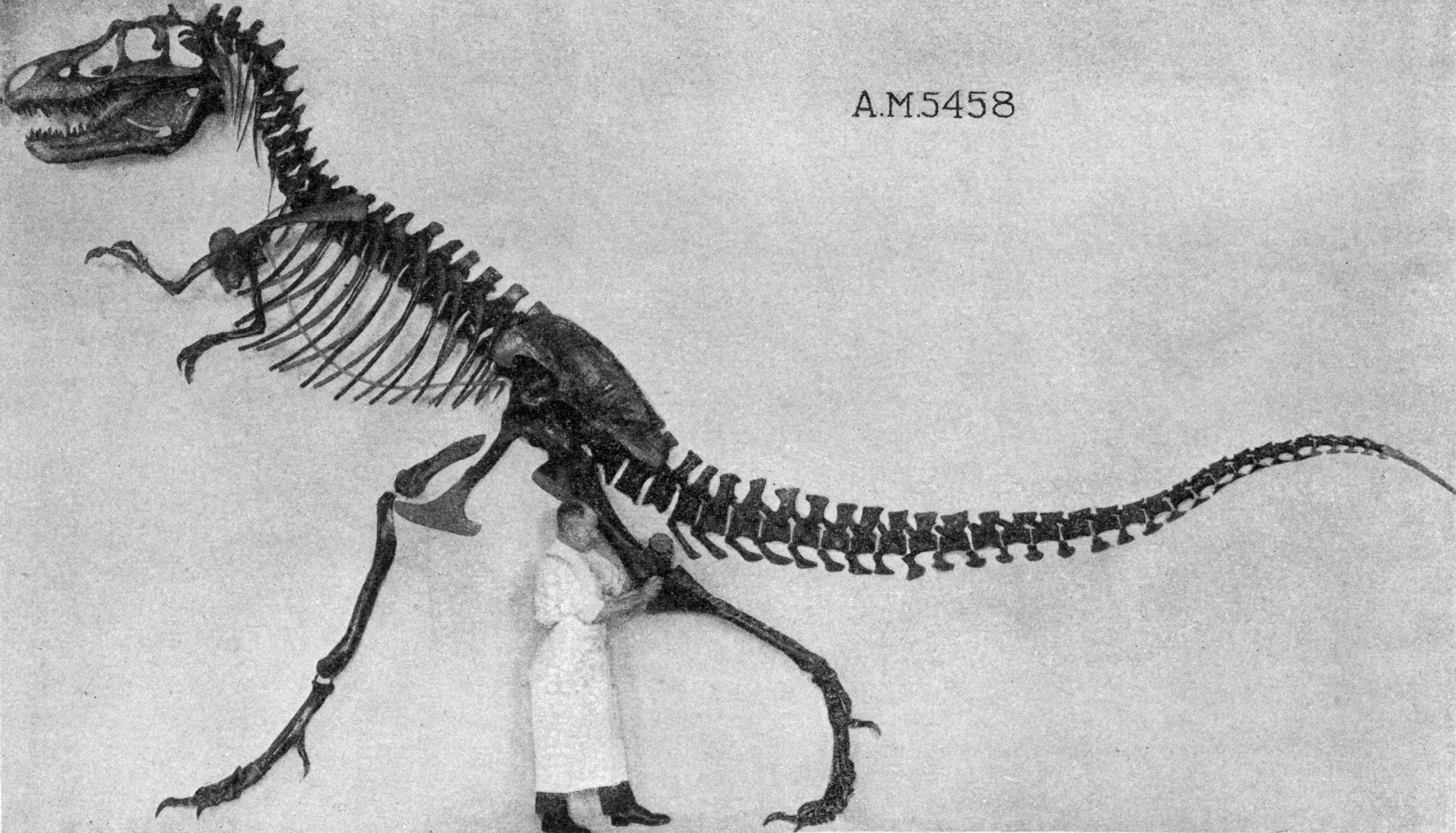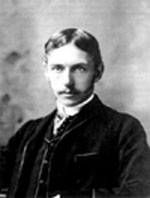|
Albertosaurus
''Albertosaurus'' (; meaning "Alberta lizard") is a genus of tyrannosaurid theropod dinosaurs that lived in western North America during the Late Cretaceous Period, about 71 million years ago. The type species, ''A. sarcophagus'', was apparently restricted in range to the modern-day Canadian province of Alberta, after which the genus is named, although an indeterminate species ("cf. ''Albertosaurus'' sp.") has been discovered in the Corral de Enmedio and Packard Formations in Mexico. Scientists disagree on the content of the genus, with some recognizing ''Gorgosaurus libratus'' as a second species. As a tyrannosaurid, ''Albertosaurus'' was a bipedal predator with tiny, two-fingered hands and a massive head that had dozens of large, sharp teeth. It may have been an apex predator in its local ecosystem. While ''Albertosaurus'' was large for a theropod, it was much smaller than its larger and more famous relative ''Tyrannosaurus rex'', growing up to in length and w ... [...More Info...] [...Related Items...] OR: [Wikipedia] [Google] [Baidu] |
Tyrannosaurid
Tyrannosauridae (or tyrannosaurids, meaning "tyrant lizards") is a family of coelurosaurian theropod dinosaurs that comprises two subfamilies containing up to thirteen genera, including the eponymous ''Tyrannosaurus''. The exact number of genera is controversial, with some experts recognizing as few as three. All of these animals lived near the end of the Cretaceous Period and their fossils have been found only in North America and Asia. Although descended from smaller ancestors, tyrannosaurids were almost always the largest predators in their respective ecosystems, putting them at the apex of the food chain. The largest species was ''Tyrannosaurus rex'', one of the largest and most massive known land predators, which measured over in length and according to most modern estimates to in weight. Tyrannosaurids were bipedal carnivores with massive skulls filled with large teeth. Despite their large size, their legs were long and proportioned for fast movement. In contrast, their ... [...More Info...] [...Related Items...] OR: [Wikipedia] [Google] [Baidu] |
Gorgosaurus
''Gorgosaurus'' ( ; ) is a genus of tyrannosaurid theropod dinosaur that lived in western North America during the Late Cretaceous Period (Campanian), between about 76.6 and 75.1 million years ago. Fossil remains have been found in the Canadian province of Alberta and the U.S. state of Montana. Paleontologists recognize only the type species, ''G. libratus'', although other species have been erroneously referred to the genus. Like most known tyrannosaurids, ''Gorgosaurus'' was a large bipedal predator, measuring in length and in body mass. Dozens of large, sharp teeth lined its jaws, while its two-fingered forelimbs were comparatively small. ''Gorgosaurus'' was most closely related to '' Albertosaurus'', and more distantly related to the larger ''Tyrannosaurus''. ''Gorgosaurus'' and ''Albertosaurus'' are extremely similar, distinguished mainly by subtle differences in the teeth and skull bones. Some experts consider ''G. libratus'' to be a species of ''Albertosaurus''; t ... [...More Info...] [...Related Items...] OR: [Wikipedia] [Google] [Baidu] |
Gorgosaurus Libratus
''Gorgosaurus'' ( ; ) is a genus of tyrannosaurid theropod dinosaur that lived in western North America during the Late Cretaceous Period (Campanian), between about 76.6 and 75.1 million years ago. Fossil remains have been found in the Canadian province of Alberta and the U.S. state of Montana. Paleontologists recognize only the type species, ''G. libratus'', although other species have been erroneously referred to the genus. Like most known tyrannosaurids, ''Gorgosaurus'' was a large bipedal predator, measuring in length and in body mass. Dozens of large, sharp teeth lined its jaws, while its two-fingered forelimbs were comparatively small. ''Gorgosaurus'' was most closely related to ''Albertosaurus'', and more distantly related to the larger ''Tyrannosaurus''. ''Gorgosaurus'' and ''Albertosaurus'' are extremely similar, distinguished mainly by subtle differences in the teeth and skull bones. Some experts consider ''G. libratus'' to be a species of ''Albertosaurus''; th ... [...More Info...] [...Related Items...] OR: [Wikipedia] [Google] [Baidu] |
Tyrannosaurus Rex
''Tyrannosaurus'' is a genus of large theropod dinosaur. The species ''Tyrannosaurus rex'' (''rex'' meaning "king" in Latin), often called ''T. rex'' or colloquially ''T-Rex'', is one of the best represented theropods. ''Tyrannosaurus'' lived throughout what is now western North America, on what was then an island continent known as Laramidia. ''Tyrannosaurus'' had a much wider range than other tyrannosaurids. Fossils are found in a variety of rock formations dating to the Maastrichtian age of the Upper Cretaceous period, 68 to 66 million years ago. It was the last known member of the tyrannosaurids and among the last non-avian dinosaurs to exist before the Cretaceous–Paleogene extinction event. Like other tyrannosaurids, ''Tyrannosaurus'' was a bipedal carnivore with a massive skull balanced by a long, heavy tail. Relative to its large and powerful hind limbs, the forelimbs of ''Tyrannosaurus'' were short but unusually powerful for their size, and they had two cl ... [...More Info...] [...Related Items...] OR: [Wikipedia] [Google] [Baidu] |
Deinodon
''Deinodon'' (Greek for "terrible tooth") is a dubious tyrannosaurid dinosaur genus containing a single species, ''Deinodon horridus''. ''D. horridus'' is known only from a set of teeth found in the Late Cretaceous Judith River Formation of Montana and named by paleontologist Joseph Leidy in 1856.Leidy, J. (1856). "Notices of the remains of extinct reptiles and fishes, discovered by Dr. F.V. Hayden in the badlands of the Judith River, Nebraska Territory." ''Proc. Acad. Nat. Sci.'', 8(2): 72. These were the first tyrannosaurid remains to be described and had been collected by Ferdinand Vandeveer Hayden. The teeth of ''Deinodon'' were slightly heterodont, and the holotype of ''Aublysodon'' can probably be assigned to ''Deinodon''. History and classification It is likely that the fossilized teeth of ''D. horridus'' belonged to the dinosaur later identified as '' Gorgosaurus libratus''. In a 1922 study, William Diller Matthew & Barnum Brown found that the teeth of ''D. horridus'' and ... [...More Info...] [...Related Items...] OR: [Wikipedia] [Google] [Baidu] |
Packard Formation
The Packard Formation is a Mesozoic geologic formation.Weishampel, et al. (2004). "Dinosaur distribution." Pp. 517-607. The formation may be from the Kirtlandian land vertebrate age."Corral De Enmedio and Packard Formations, Cabollona Group, Sonora, Mexico," in Sullivan and Lucas (2006). Page 16. It has a similar fauna to the Corral de Enmedio Formation. Paleofauna The fragmentary remains of indeterminate lepisosteids, trionychids, eusuchians, hadrosaurids, and ceratopsids are known from the Packard Formation. See also * List of dinosaur-bearing rock formations ** List of stratigraphic units with few dinosaur genera This list of stratigraphic units with few non-avian dinosaur genera includes Mesozoic stratigraphic units of formation rank or higher that have produced dinosaur body fossils which have been referred to at most five genera. Since taxonomy freque ... Footnotes References * Sullivan, R.M., and Lucas, S.G. 2006.The Kirtlandian land-vertebrate "age" – faunal ... [...More Info...] [...Related Items...] OR: [Wikipedia] [Google] [Baidu] |
Corral De Enmedio Formation
The Corral de Enmedio Formation is a Mesozoic geologic formation in Mexico.Weishampel, et al. (2004). "Dinosaur distribution." Pp. 517-607. The formation may be from the Kirtlandian land vertebrate age."Corral De Enmedio and Packard Formations, Cabollona Group, Sonora, Mexico," in Sullivan and Lucas (2006). Page 16. It has a similar fauna to the Packard Formation. Paleofauna The fragmentary remains of indeterminate lepisosteids, trionychids, eusuchians, hadrosaurids, and ceratopsids are known from the Corral de Enmedio Formation. See also * List of dinosaur-bearing rock formations ** List of stratigraphic units with few dinosaur genera This list of stratigraphic units with few non-avian dinosaur genera includes Mesozoic stratigraphic units of formation rank or higher that have produced dinosaur body fossils which have been referred to at most five genera. Since taxonomy freque ... Footnotes References * Sullivan, R.M., and Lucas, S.G. 2006.The Kirtlandian land-vertebrat ... [...More Info...] [...Related Items...] OR: [Wikipedia] [Google] [Baidu] |
Henry Fairfield Osborn
Henry Fairfield Osborn, Sr. (August 8, 1857 – November 6, 1935) was an American paleontologist, geologist and eugenics advocate. He was the president of the American Museum of Natural History for 25 years and a cofounder of the American Eugenics Society. Early life and education Family Henry Fairfield Osborn was born in Fairfield, Connecticut on August 8, 1857 in a family of distinction. He was the eldest son of shipping magnate and railroad tycoon William Henry Osborn and Virginia Reed (née Sturges) Osborn. His maternal grandparents were Jonathan Sturges, a prominent New York businessman and arts patron who was a direct descendant of Jonathan Sturges, a U.S. Representative from Connecticut, and Mary Pemberton Cady, a direct descendant of prominent educator Ebenezer Pemberton. His maternal aunt Amelia Sturges, was the first wife of J. P. Morgan, but died of tuberculosis soon after their wedding. His younger brother was William Church Osborn, who served as presiden ... [...More Info...] [...Related Items...] OR: [Wikipedia] [Google] [Baidu] |
1914 In Paleontology
References * Trexler, D., 2001, Two Medicine Formation, Montana: geology and fauna: In: Mesozoic Vertebrate Life, edited by Tanke, D. H., and Carpenter, K., Indiana University Press, pp. 298–309. 1910s in paleontology Paleontology Paleontology (), also spelled palaeontology or palæontology, is the scientific study of life that existed prior to, and sometimes including, the start of the Holocene epoch (roughly 11,700 years before present). It includes the study of fossi ... Paleontology 4 ... [...More Info...] [...Related Items...] OR: [Wikipedia] [Google] [Baidu] |
Late Cretaceous
The Late Cretaceous (100.5–66 Ma) is the younger of two epochs into which the Cretaceous Period is divided in the geologic time scale. Rock strata from this epoch form the Upper Cretaceous Series. The Cretaceous is named after ''creta'', the Latin word for the white limestone known as chalk. The chalk of northern France and the white cliffs of south-eastern England date from the Cretaceous Period. Climate During the Late Cretaceous, the climate was warmer than present, although throughout the period a cooling trend is evident. The tropics became restricted to equatorial regions and northern latitudes experienced markedly more seasonal climatic conditions. Geography Due to plate tectonics, the Americas were gradually moving westward, causing the Atlantic Ocean to expand. The Western Interior Seaway divided North America into eastern and western halves; Appalachia and Laramidia. India maintained a northward course towards Asia. In the Southern Hemisphere, Australia an ... [...More Info...] [...Related Items...] OR: [Wikipedia] [Google] [Baidu] |
Mexico
Mexico (Spanish language, Spanish: México), officially the United Mexican States, is a List of sovereign states, country in the southern portion of North America. It is borders of Mexico, bordered to the north by the United States; to the south and west by the Pacific Ocean; to the southeast by Guatemala, Belize, and the Caribbean Sea; and to the east by the Gulf of Mexico. Mexico covers ,Mexico ''The World Factbook''. Central Intelligence Agency. making it the world's List of countries by area, 13th-largest country by area; with approximately 126,014,024 inhabitants, it is the List of countries by population, 10th-most-populous country and has the hispanophone#Hispanosphere, most Spanish-speakers. Mexico is organized as a federation, federal republic comprising 31 list of states of Mexico, states an ... [...More Info...] [...Related Items...] OR: [Wikipedia] [Google] [Baidu] |
Predator
Predation is a biological interaction where one organism, the predator, kills and eats another organism, its prey. It is one of a family of common feeding behaviours that includes parasitism and micropredation (which usually do not kill the host) and parasitoidism (which always does, eventually). It is distinct from scavenging on dead prey, though many predators also scavenge; it overlaps with herbivory, as seed predators and destructive frugivores are predators. Predators may actively search for or pursue prey or wait for it, often concealed. When prey is detected, the predator assesses whether to attack it. This may involve ambush or pursuit predation, sometimes after stalking the prey. If the attack is successful, the predator kills the prey, removes any inedible parts like the shell or spines, and eats it. Predators are adapted and often highly specialized for hunting, with acute senses such as vision, hearing, or smell. Many predatory animals, both vertebrate ... [...More Info...] [...Related Items...] OR: [Wikipedia] [Google] [Baidu] |






_NPS_img1.jpg)

_with_its_prey.jpg)